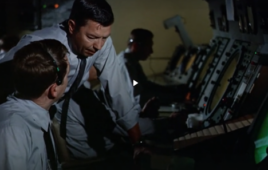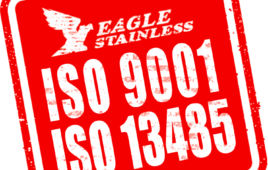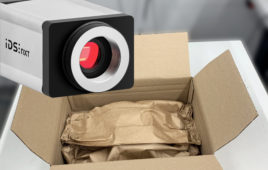Charter’s $61B bid for TWC goes public – and nasty
After months of “private” negotiations that were consistently leaked to the press, Charter Communications finally made a public offer to buy Time Warner Cable.
The bid, $132.50 a share, values Time Warner Cable at more than $61 billion, included debt. TWC rejected the offer as too low.
A deal is often its own reward, but the search for a rationale has become important in the valuation of this acquisition, and because of that, executives from the two companies got pretty nasty with each other almost as soon as the offer was made public.
Let’s back up to last spring, when Liberty Media bought a 27 percent stake in Charter. John Malone, who chairs the Liberty Media board, then began loudly evangelizing for consolidation in the cable market. Malone was clearly paving the way for an acquisition.
Consolidation arguments often hinge on the company resulting from a merger gaining market leverage due to a size advantage. Few investors or analysts thought that a combination of Charter and TWC would gain enough of advantage to justify a merger, though.
Indeed, some cable insiders see the takeover as simply John Malone maneuvering to reinsert himself in the U.S. cable market.
In the fall, analyst Craig Moffett quizzed Charter CEO Tom Rutledge on the rationale for the merger, and even Rutledge could come up with little more than some vague references to synergies.
All along, TWC said it was not for sale, but would be forced to consider a deal in the $160/share range. Early in January, Charter went public with the $132 bid. Charter’s offer included about $83 cash per share and roughly $49.50 in Charter stock.
TWC said the $132/share deal is too low, that the offer works out to roughly 7 times EBITDA, and that comparable deals in the past typically worked out to 8 times EBITDA.
TWC CEO Rob Marcus sent a letter to Rutledge asserting that in addition, TWC is a unique property, with a fully modernized network, operating in several highly valuable markets.
There are different opinions among investors and analysts as to whether $132/share is too low or almost precisely appropriate.
Analysts at Macquarie polled a sample of TWC investors, and the majority are looking for something in the $140 to $150 range.
Charter has been holding firm.
At that point, the question for Charter became: what would justify sticking with an offer below what TWC and its investors were looking for? The answer Charter came up with was: What if TWC was a mess?
Two days after TWC rejected the public $132 bid, Charter COO John Bickham got on a call with analysts and for the first time, someone associated with Charter called TWC a “turnaround project.”
“This negative momentum isn’t simply the result of their operating plan over the last year. It is the failed plan over the past half-decade,” said Charter’s chief operating officer, John Bickham, in a conference call with analysts.
He pointed out that TWC is rapidly losing basic video subscribers.
Charter Communications has also been losing basic video subscribers. So have most cable companies.
Charter’s online presentation had more details on its proposal, including that it expects $750 million in annual operating cost savings. It also said if it projected its own revenue growth rate for the last 18 months onto Time Warner Cable’s results in 2015 and 2016, Time Warner Cable’s 2016 revenue would be $725 million higher than current forecasts.
Charter says it would invest in converting Time Warner Cable’s channel offering to all-digital, which would free up bandwidth for faster Internet speeds; eliminate “nickel and dime” charges for things like modem rentals; and do away with inferior but cheaper Internet and TV packages that encourage people to downgrade service once promotional pricing offers end.
Charter is the fourth-largest cable operator in the U.S.; TWC is the second-largest, by number of basic subscribers. The combination would continue to be the second largest cable operator, but it would also leapfrog Dish Network to become the third-largest among all multichannel video program distributors (MVPDs), behind Comcast and DirecTV.
The deal would be the third largest in the world in the last 5 years, according to Bloomberg.
Charter has offered a slate of executives to take over TWC’s board.
Appeals Court knocks down net neutrality rules
A federal appeals court ruled that the FCC has authority to create rules to guide the behavior of broadband providers, but its rationale for imposing some key rules regarding network neutrality were built on a weak legal foundation. The result was that the court invalidated those rules, which covered anti-blocking and anti-discrimination.
According to the U.S. Court of Appeals for the District of Columbia Circuit, the Federal Communications Commission could, however, go back and devise a better argument for its authority to restore the negated rules.
It’s hard to gauge what the effect of the ruling might be. The NCTA, the ACA, and several individual MSOs said they intend to abide by the regulations anyway. It is speculation only that companies like Verizon, which brought the suit that challenged the FCC’s authority, might now follow policies that previously would have been prohibited.
The Court affirmed that the FCC has explicit statutory authority to promote broadband services. The FCC also has explicit authority to regulate common carrier services.
However, the FCC years ago ruled that broadband is not a common carrier service. The appeals court found that the FCC’s authority to regulate broadband is therefore narrow.
According to the decision written by Circuit Judge David Tatel, “Given that the commission has chosen to classify broadband providers in a manner that exempts them from treatment as common carriers, the Communications Act expressly prohibits the commission from nonetheless regulating them as such.”
To that end, the Court negated FCC rules regarding anti-blocking and anti-discrimination.
The court said the FCC is free to devise a stronger argument for assuming the necessary authority to restore some version of the vacated regulations.
Judge Tatel noted that any decision the FCC makes would have to depend on a detailed analysis of the market and a disciplined evaluation of the market power of various market participants.
FCC chair Tom Wheeler appears philosophically inclined toward fewer regulations, but also recently argued he has the authority to police Internet service providers on an individual basis if their behavior is anticompetitive or prevents consumers from accessing the Web.
The NCTA pledged that the cable industry would behave itself even should the absence of regulations persist. NCTA president & CEO Michael Powell wrote, “The cable industry has always embraced the principles of an open Internet and the Court decision will not change that. Consumers have always been entitled to enjoy the legal web content of their choosing and they will continue to do so. An open Internet is good for our customers, and good for our business.
4K takes center stage at CES
Ultra HD, or 4K, and the frequently-associated HEVC compression, emerged as some of the most talked about technologies at last month’s International CES confab in Las Vegas.
While there were plenty of 4K TV product announcements from the likes of Sony, Sharp, Samsung, and others, the real watershed moment for Ultra HD was the support it garnered from content providers.
Setting aside the 3D debacle, 4K is next great hope for consumer electronic companies, content providers and video service providers.
At CES, Samsung announced it would provision 4K content through a partnership with Comcast that connects to an Internet-connected TV with a Comcast app. Comcast, which demonstrated the first public U.S.-based delivery of 4K UHD video at last year’s Cable Show, will stream on demand content to 2014 Samsung UHD TVs later this year via the launch of its Xfinity TV 4K app.
Comcast said it would also work with programmers, including its own NBCUniversal, to provide more 4K choices for users of its app. During a panel session, Comcast chief technology officer Tony Werner said the cable operator would record some of this months’ Sochi Winter Olympics in 4K, according to press reports.
In addition to Comcast, Samsung also announced partnerships with Amazon, Netflix and DirecTV to stream 4K content to its newest UHD TVs. Sticking with Samsung, it also announced it would work with M-Go, which is a joint venture between DreamWorks and Technicolor SA, to stream more 4K video content.
In addition to Samsung, Amazon announced 4K content partnerships with Warner Bros., Lionsgate, 20th Century Fox, and Discovery.
In Las Vegas, Netflix CEO Reed Hastings said the streaming company was working with studios on formatting movies and TV shows in 4K, with one of the first series being the new season of “House of Cards.”
So while the programming side of 4K has started to coalesce, the initial wave of 4K content will be streamed over the Internet to Ultra HD TVs. In order to quadruple the resolution of standard HD TV sets, 4K will need better compression via HEVC. All of Sony’s new UHD TVs will have HEVC built into them.
At CES, Envivio demonstrated 4K HEVC encoding technology with Broadcom, MStar Semiconductor and STMicroelectronics using the latest generation HEVC (H.265) video codec. LG’s chief technology officer Skott Ahn told The Associated Press that 4K content could be streamed with 8-15 Mbps Internet speeds using the latest HEVC video compression standard.
While there are some models of Ultra HD TV sets that go for under $1,000, including a model from Seiki Digital for $500, most top brands have entry-level prices of around $2,000. For consumers that purchased HD TVs over the past few years, those prices probably mean Ultra HD TVs will fall into the realm of early adopters for the near term.
Last year, about 60,000 Ultra HD sets were sold across the nation, but the Consumer Electronics Association estimated that 485,000 would fly off the shelves this year, which should be enough to catch the attention of cable operators.
Carlson Wireless okayed to market white spaces system
The FCC has certified Carlson Wireless Technologies’ RuralConnect TV white space (TVWS) radio system for use with the Spectrum Bridge TV white spaces database.
The certification essentially allows Carlson Wireless to start marketing its non-line-of-site (NLOS) fixed wireless broadband system in the U.S.
RuralConnect transmits in unused frequencies in the UHF TV band. The system uses the Spectrum Bridge database to determine what frequencies are unused in any given broadcast area.
As the name of its product implies, Carlson Wireless aims to provide wireless connectivity in rural areas previously difficult or expensive to reach. The company also sees opportunities with businesses and governments that need to extend their communications and private networks, such as data monitoring and control for utilities, oil & gas operations, resource management, public safety, video surveillance, VoIP networks and more.
“FCC certification enables us to offer this technology domestically,” said Jim Carlson, CEO of CWT. “And because of the FCC’s stature worldwide, it also gives a boost to global efforts to adopt TVWS technology,” Carlson continued.
Filed Under: Industry regulations




